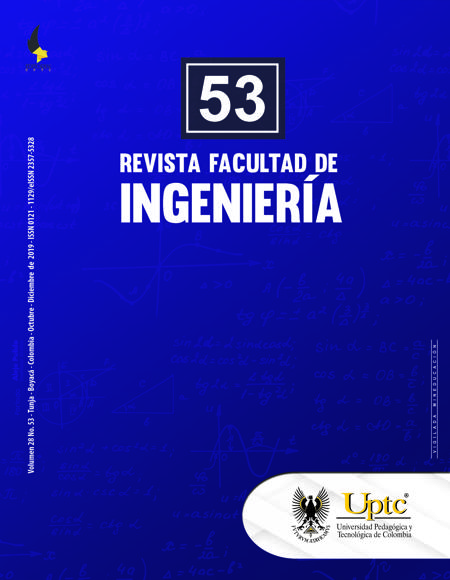Anti-Windup Strategy Based on Back Calculation and Tracking Applied to Direct PID Fuzzy Controllers

Abstract
Recently, direct fuzzy PID controllers have been used more frequently in industrial continuous process applications, because they can replace the conventional PID within the control loop, since its non-linear behavior, presents an adequate performance in control tasks applied to processes nonlinear. However, PID controllers are affected by the phenomenon called windup which degrades the performance of the controller to the accumulation of error in the integral component. This article presents a proposal of an anti-windup scheme based on back calculation and tracking, for which the tracking constant is obtained through the tuning parameters of the fuzzy PID controller. The tuning method used for this document consists in the adjustment of the control surface by means of the scale gains of the architectures considered. In addition, the validation of the proposed anti-windup method performance is carried out through a comparative analysis against other classic techniques. The proposed strategy shows an adequate performance against changes in the reference and rejection of disturbances without tuning additional parameters. An analysis of the control effort shows the proposed strategy produces control actions smaller than the other cases considered. Therefore, due to the increasing popularity of fuzzy systems in the industry and the simplicity of some design methods, the proposed strategy can be easily implemented in different industrial regulators.
Keywords
continuous systems, fuzzy control, industrial control, PID control, scaling factors, windup
References
[1] J. E. Rodríguez-Castellanos, V. H. Grisales-Palacio, and J. E. Cote-Ballesteros, “A tuning proposal for direct fuzzy PID controllers oriented to industrial continuous processes,” IFAC-PapersOnLine, 2018. https://doi.org/10.1016/j.ifacol.2018.06.172.
[2] H. A. Fertik, and C. W. Ross, “Direct digital control algorithm with anti-windup feature,” ISA Trans., vol. 6 (4), p. 317, 1967.
[3] L. R. Da Silva, R. C. C. Flesch, and J. E. Normey-Rico, “Analysis of Anti-windup Techniques in PID Control of Processes with Measurement Noise,” IFAC-PapersOnLine, vol. 51 (4), pp. 948-953, 2018. https://doi.org/10.1016/j.ifacol.2018.06.100.
[4] L. Rundqwist, “Anti-reset windup for PID controllers,” IFAC Proceedings Volumes, vol. 23 (8, Part 4), pp. 453-458, Aug. 1990. https://doi.org/10.1016/s1474-6670(17)51865-0.
[5] S. Kumar, and R. Negi, “A comparative study of PID tuning methods using anti-windup controller,” in ICPCES 2012- 2nd International Conference on Power, Control and Embedded Systems, 2012, pp. 1-4. https://doi.org/10.1109/ICPCES.2012.6508138.
[6] R. F. García, and F. J. P. Castelo, “Conditional integration on PID for types 1 and 2 control systems,” in Proceedings of the IEEE International Conference on Control Applications, 2003, pp. 577-581. https://doi.org/10.1109/cca.2002.1040249.
[7] A. Visioli, “Modified anti-windup scheme for PID controllers,” IEEE Proc.-Control Theory Appl., vol. 150 (1), pp. 49-54, Jan. 2003. https://doi.org/10.1049/ip-cta:20020769.
[8] A. Hansson, P. Gruber, J. Tödtli, and P. Ries, “Fuzzy Anti-Reset Windup for Heater Control,” IFAC Proceedings Volumes, vol. 27 (10), pp. 141-146, Aug. 1994. https://doi.org/10.1016/s1474-6670(17)45861-7.
[9] A. Hansson, P. Gruber, and J. Tödtli, “Fuzzy Anti-Reset Windup for PID Controllers,” IFAC Proceedings Volumes, vol. 26 (2), pp. 917-920, Jul. 1993. https://doi.org/10.1016/S1474-6670(17)48407-2.
[10] G. Lin, Y. Wang, and F. Huang, “A novel anti-windup compensator based on fuzzy logic,” in Proceedings of 4th International Conference on Computer Science and Education, 2009, pp. 23-26. https://doi.org/10.1109/ICCSE.2009.5228534.
[11] J. Wang, B. Mo, and H. Zhu, “Fuzzy Anti-windup Compensator Design for Linear Active Disturbance Rejection Control,” in Proceedings of IEEE 3rd Advanced Information Technology, Electronic and Automation Control Conference, Oct. 2018, pp. 500-504. https://doi.org/10.1109/IAEAC.2018.8577650.
[12] J. R. B. A. Monteiro, W. C. A. Pereira, M. P. Santana, T. E. P. Almeida, G. T. Paula, and I. Santini, “Anti-windup method for fuzzy PD+I, PI and PID controllers applied in brushless DC motor speed control,” in Proceedings of Brazilian Power Electronics Conference, Oct. 2013, pp. 865-871. https://doi.org/10.1109/COBEP.2013.6785216.
[13] L. Yang, Z. Chen, P. Yuan, and Z. Chang, “A novel fuzzy logic and anti-windup PI controller for a rectifier with direct driven permanent magnet synchronous generator,” in 2nd Conference on Power Electronics and Intelligent Transportation System, Dec. 2009, pp. 422-426. https://doi.org/10.1109/PEITS.2009.5406747.
[14] K. J. Astrom, and T. HÄgglund, “Advanced PID control,” IEEE Control Systems, 2006. https://doi.org/10.1109/MCS.2006.1580160.
[15] J. Jantzen, “Tuning Of Fuzzy PID Controllers,” Tech. Univ. Denmark, Dep. Autom., vol. 871 (98-H), pp. 1-22, 1998. https://doi.org/10.2118/153741-MS.
[16] P. J. Escamilla-Ambrosio, and N. Mort, “A novel design and tuning procedure for PID type fuzzy logic controllers,” in 1st International IEEE Symposium, 2002. https://doi.org/10.1109/IS.2002.1044225.
[17] M. Morari, and E. Zafiriou, Robust process control. New Jersey, USA: Prentice-Hall, 1989.